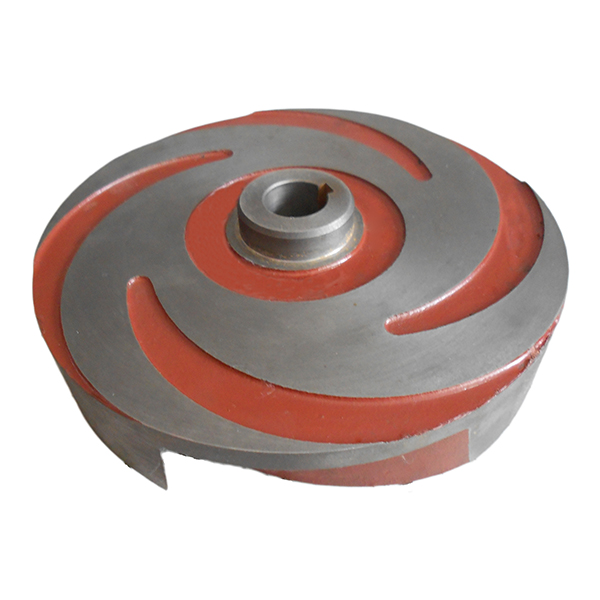Mobile:+86-311-808-126-83
Email:info@ydcastings.com
impeller casting
The Art and Science of Impeller Casting
Impellers are critical components used in various engineering applications, particularly in pumps, turbines, and compressors. Their design and efficiency play a pivotal role in the performance of these machines. One of the most significant processes in manufacturing impellers is casting, a method that allows for the creation of complex shapes and geometries that would be difficult to achieve using traditional machining methods. This article delves into the intricacies of impeller casting, exploring its processes, advantages, challenges, and innovations.
Understanding Impeller Design
Before diving into casting techniques, it is essential to understand what impellers are and how their design influences performance. An impeller is a rotating component that transfers energy to a fluid through the conversion of rotational energy into hydrodynamic energy. The design of an impeller includes considerations such as blade shape, angle, diameter, and the material used, all of which affect the flow characteristics, efficiency, and the overall performance of the equipment in which it's used.
The Casting Process
Impeller casting typically involves several key steps
1. Pattern Creation The first step in the casting process is creating a pattern, usually from a material like wood, metal, or plastic, which replicates the final impeller shape. This pattern is crucial as it forms the mold into which the molten metal will be poured.
2. Mold Making The pattern is used to create a mold, often made from sand, which can withstand high temperatures. There are various types of molds, including green sand molds, resin-bonded sand molds, and investment casting molds, each chosen based on specific requirements and production volumes.
3. Melting and Pouring Once the mold is prepared, the selected metal—most often aluminum, brass, or stainless steel—is melted in a furnace. The molten metal is then poured into the mold cavity, where it will cool and solidify.
4. Cooling and Finishing The cooling process can take from several minutes to hours, depending on the size of the impeller and the type of metal used. Once fully solidified, the mold is broken away to reveal the cast impeller, which may require further finishing processes such as grinding, machining, or polishing to achieve the desired specifications.
Advantages of Impeller Casting
Casting offers several advantages over other manufacturing techniques
impeller casting

- Complex Geometries The casting process allows for the production of intricate designs that may be too complex for machining. This flexibility enables engineers to optimize impeller performance through innovative designs.
- Material Efficiency Casting can minimize material waste compared to machining, where a significant amount of metal is often removed to achieve the final shape.
- Cost-Effectiveness For large production runs, casting can be more economical as it often results in lower labor and material costs than machining.
Challenges in Impeller Casting
Despite its advantages, impeller casting is not without challenges
- Defects Casting processes can lead to defects such as porosity, shrinkage, and inclusions, which may jeopardize the performance and integrity of the impeller.
- Quality Control Ensuring consistent quality across numerous castings can be difficult. Rigorous testing and inspection are often required to maintain high standards.
- Lead Time The initial setup for casting, including mold creation, can be time-consuming, potentially leading to longer lead times for production.
Innovations and Future Trends
The future of impeller casting looks promising, with advancements in technology and materials. Additive manufacturing, or 3D printing, is being explored to create molds that enhance the casting process, allowing for greater design flexibility and faster prototyping. Moreover, the use of computer simulations can help predict fluid dynamics and optimize impeller designs before the casting process begins.
In conclusion, impeller casting is a sophisticated blend of art and science, requiring precision, creativity, and a deep understanding of material properties and flow dynamics. As technology progresses, the casting industry will continue to evolve, enabling the production of more effective and efficient impellers, ultimately leading to better-performing pumps, turbines, and compressors that power our modern world.
-
Why Should You Invest in Superior Pump Castings for Your Equipment?NewsJun.09,2025
-
Unlock Performance Potential with Stainless Impellers and Aluminum End CapsNewsJun.09,2025
-
Revolutionize Your Machinery with Superior Cast Iron and Aluminum ComponentsNewsJun.09,2025
-
Revolutionize Fluid Dynamics with Premium Pump ComponentsNewsJun.09,2025
-
Optimizing Industrial Systems with Essential Valve ComponentsNewsJun.09,2025
-
Elevate Grid Efficiency with High-Precision Power CastingsNewsJun.09,2025











